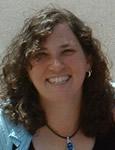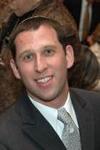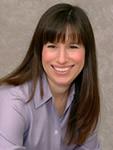Annually, and in many ways daily, we as Jews recall events that befell us as a nation.
Many people, daily, recite a list of “Shesh Zekhirot “(The Six Remembrances). The first of these is the Exodus from Egypt. Embedded to varying degrees in our daily prayers are references to the Korbanot (sacrifices), Jerusalem, Israel, rebuilding the Beit Ha-Mikdash (the Holy Temple) and Geulah (redemption).
The periodic ta’aniyot (fast days) are largely devoted to one aspect or another of national tragedy, more often than not dedicated to the loss of our national sovereignty over the Land of Israel (Eretz Yisrael) and the destruction of the Ancient Temples in Jerusalem.
The fast of Tisha B’Av (Ninth of Av), an especially difficult fast, is entirely dedicated to the loss of the Batei ha-Mikdash (Holy Temples).
The question you raise, “How are we supposed to feel sad about the destruction of the Temple? It happened so long ago…?” has been asked by the great sages. The overwhelming response is that we as a nation have suffered loss and any restoration that we have experienced is incomplete.
By way of example, at the Pesah (Passover) Seder where we recite “L’Shanah Haba’ah Bi-ru-sha-la-yim” (Next Year in Jerusalem) many today add a word, thus saying; Yerushalayim ha-be-nu-yah (Jerusalem rebuilt or completely built up).
So many of us have had the zekhut (merit) of visiting modern day Israel or going on aliyah.
For this reason, for many, reciting the prayers and fasting, as if nothing has changed with the advent of modern day Zionism, e.g. we now have the vibrant State of Israel and Jerusalem under Jewish sovereignty, has become increasingly challenging.
While I have not seen any real effort to revise the Jewish calendar, eliminating our fast days, I have seen references to celebrating the day of Yom Ha’atzmaut (Israeli Independence Day) and Yom Yerushalayim (Jerusalem Day) as real chagim (holy days). Much of this is taken extremely seriously, especially by those who describe themselves as religious Zionists.
The Chief Rabbinate of Israel, under Chief Rabbi Isaac Herzog, issued a widely respected and recited “Tefillah l’shelom Medinat Yisrael—Prayer for the Peace of the State of Israel.” It includes the words, “rei-sheet tz’mi-hat ge’u-la-tei-nu” (the first flowering of our deliverance).
There have been wonderful descriptions of the return to Zion and the rebirth of the Jewish nation in its land, in the writings of Rabbi Eliyahu Kitov in his Sefer Ha-Toda’ah—Book of Our Heritage. He wrote of this especially after the tremendous victory in the 1967 Six Day War, and while at his table in his home and with his family, I was privileged to hear him speak of these matters and of his love and devotion to the State of Israel.
Rabbi Shelomo Yosef Zevin wrote of these matters in his masterly work Moadim ba-Halakhah—the Festivals in the Halakhah (Jewish Law).
With the current Jewish trend toward the right, in the direction of fundamentalism, many Jewish congregations no longer recite the Prayer for the Peace of the State of Israel, or recite a modified version of it, or even knowingly avoid mentioning “State of Israel.” Instead, they say “Eretz Yisrael”—the Land of Israel, giving no recognition to the Jewish sovereignty embodied in the “State.”
Additionally, these two aforementioned masterly books were revised in subsequent editions, omitting any references to the State of Israel and the special days devoted to it. I find this regrettable and a revisionism of Jewish history.
Many efforts have been put forth to change the special prayer book of Kinot for the fast of Tisha B’Av. Among the most famous was by the Israeli Chief Rabbi, Rabbi Shelomo Goren and the Chief Sephardic Rabbi of Tel Aviv, Rabbi Haim David Halevi. They each wrote prayers which modified and adjusted (softened) the harsh traditional language of the “nachem” prayer recited in the Minha afternoon prayers on the solemn fast day.
Chief Rabbi Shelomo Goren’s prayer was added in as an alternative in the early edition of the most popular British printing of the Kinot prayer book edited by Rabbi Abraham Rosenfeld, known as The Authorised Kinot for the Ninth of Av. The book enjoys widespread appeal throughout the English speaking world.
In some congregations, the rabbinic leadership would simply announce, “We will be reciting the traditional ‘nachem’ prayer and not the alternative version.” Apparently, this did not satisfy some, for sadly, it too dropped the softened alternate version of the “nachem” prayer in later printings.
Chief Rabbi Haim David Halevi presents an in-depth analysis of questions pertaining to fasting and prayer in light of the restoration of Zion in our day, with the establishment of the State of Israel and the return of millions of Jews to their homeland. This appears, together with his suggested adjustment to the ‘nachem’ prayer, in volume two of his hugely popular series known as “Aseh L’kha Rav—Set For Yourself a Teacher.”
I can understand your concern and perplexity in the face of the challenge to preserve ancient Jewish tradition and to accept the reality that so much has changed in our history, especially with the return to Zion and Jewish sovereignty in Medinat Yisrael—the State of Israel, which to our way of thinking is the first flowering of our deliverance.
Answered by: Rabbi Sanford Shudnow









